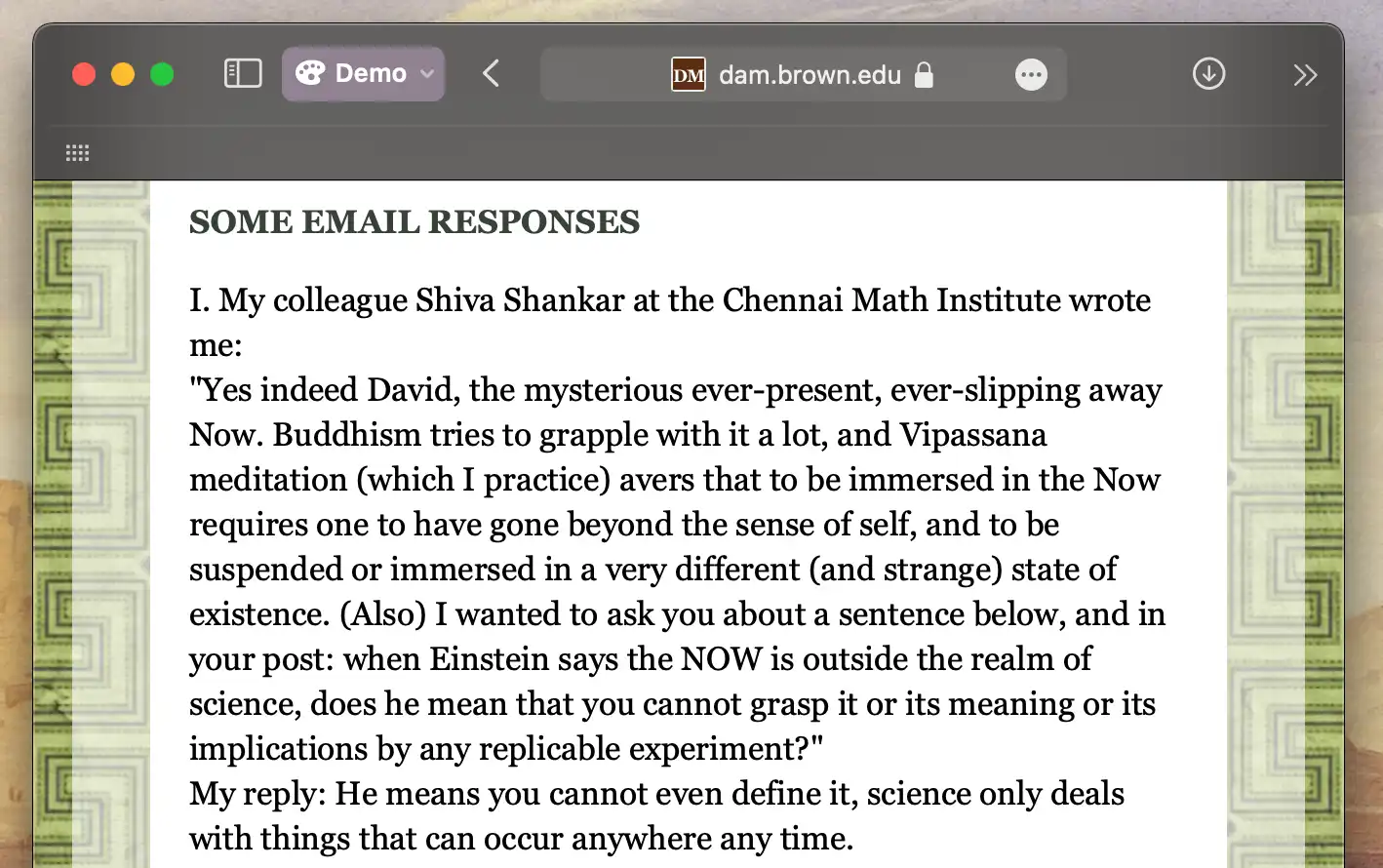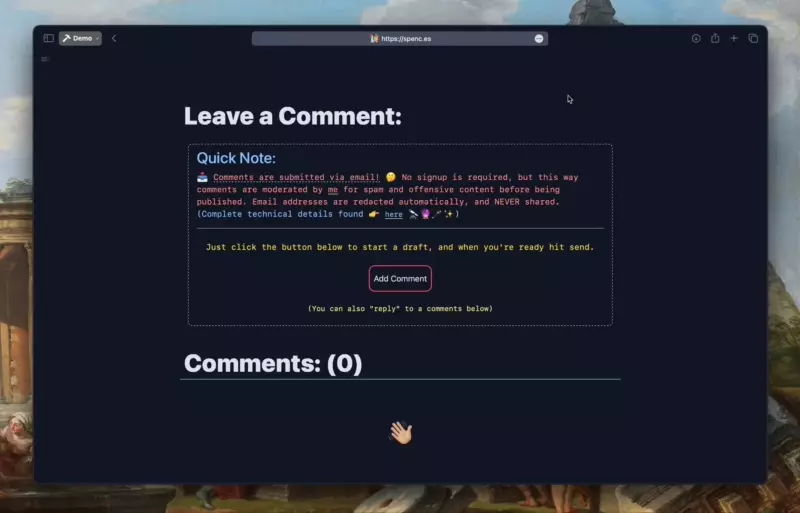Email as a Commenting System!?
Introducing r3ply: Commenting, as Easy as Sending an Email


tl;dr
I made a prototype of a commenting system that accepts submissions via email called r3ply. This simultaneously allows for content moderation while not requiring users to create an account, and it has a range of other benefits that come for free with email, like drafts and history. Try it out and let me know what you think.
°l||l°l||l°l||l°l||l°l||l°l||l°l||l°l||l°l||l°l||l° Fewer and fewer independent websites support reader submitted comments. One barrier is that existing designs are fundamentally at odds with what the user wants and what the site moderator needs. The key tradeoffs are between providing a convenient and respectful experience for the site visitor, while still retaining the ability to moderate comments for spam and offensive content. Historically, requiring users to sign up for accounts before submitting comments has been the main approach to moderation, however a signup flow is in conflict with the visitor's goal of convenience. An alternative to this has been to partner with large, commercial social media companies, to leverage their larger pool of accounts that many site visitors will most likely already have on these other platforms. This approach helps ease the convenience problem mentioned above (assuming one's visitors use social media), but it does so at the expense of their privacy. This compromise is arguably worse, because the privacy issues often happen without the reader's knowledge. In this post, I want to share a design and demo a prototype called r3ply that provides what I believe is the best compromise between these tradeoffs for small sites, as well as being easy to integrate into most sites, including those that are statically generated. My ultimate goal is to gather feedback, and judge whether there's enough interest in r3ply for me to commit to open sourcing the code. If you have questions or feedback please leave a comment below, thank you. I really enjoy small, beautiful websites, and one such website that I encountered is a blog that belongs to Professor David Mumford at Brown. What was significant to me about his was how he would take emails, written by friends, colleagues, and family, in response to his blog posts, and then update the very same posts with the contents of those emails in a section titled "Email Submissions". This actually had a lot of nice elements that I would want from a commenting system. It's easy for its visitors to use, respects their privacy, and email itself provides a lot of nice features for free, like drafts and comment history. I saw elegance in such a simple solution; moreover, it seemed better suited for longer form, more thoughtful commentary. The only problem for my uses was that it was too manual of a process. r3ply is the system I ended up building to improve upon the professor's original "email submissions" section (see above), with the key difference being that my design be more automated. The end result looks and feels like a fully functional commenting system, and I'm so far pretty happy with the result. This is the flow for commentators: Currently users also receive an 'autoreply' response, letting them know their comment succeeded, with a preview link to their comment. (In the future, I plan on adding a feature to allow users to reply to that email to manager their comment, e.g. This is the flow for moderators: If moderation is enabled, the owner of the site will also receive a notification when a comment has been submitted. r3ply is a fairly simple system, with few surprising elements to its design. Its primary purpose is to take inbound emails and parse them into comments, before sending them to wherever the site moderator wants them to go. It does not, however, have opinions on how those comments are to be compiled/rendered. Therefore, it's fairly easy to implement with most existing sites, and somewhat modular. Here's an overview of the flow of data: There's only so much information that's suited to fit in a blog post. I hope the project will be received positively, and that it will justify the effort it takes to write documentation and maintain an open source project. In the interim, this FAQ will serve in the place of official documentation. Thanks for reading!Email as a Commenting System Is Not New🔗

How "r3ply" Works🔗

edit, delete, etc...)Some Technical Details🔗
mailto: links are generated with all the necessary information.

*Note: among other checks, it's especially important to note that the data generated in step #1 is then validated in step #2 by comparing what is received to a pre-generated hash. As you can imagine, this prevents accidental changes to the comment's final destination, as well defends against intentional tampering.Documentation and Future Work🔗
°l||l°l||l°l||l°l||l°l||l°l||l°l||l°l||l°l||l°l||l°
click for comments